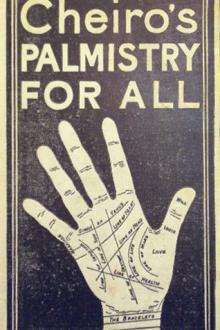The Diary - Samuel Pepys (red white and royal blue hardcover txt) 📗

- Author: Samuel Pepys
Book online «The Diary - Samuel Pepys (red white and royal blue hardcover txt) 📗». Author Samuel Pepys
Sir Peter Lely (1618–1680) was knighted January 11th, 1678–79. His house was in Drury Lane. He died November 30th, 1680, and was buried by torchlight in St. Paul’s Church, Covent Garden, December 7th. ↩
See March 2nd, 1666–67. ↩
D.C.L., King’s Advocate, 1669; Judge of the High Court of Admiralty in 1673, in succession to Sir Leoline Jenkins. ↩
Sir Leoline Jenkins, Principal of Jesus College, Oxford, and afterwards made Judge of the Admiralty and the Prerogative Court. He was subsequently employed on several embassies, and succeeded Henry Coventry as Secretary of State, 1680. Died 1685, aged sixty-two. His State Papers have been published. Burnet says of him, “He was a man of an exemplary life and considerably learned, but he was dull and slow; he was suspected of leaning to popery, though very unjustly.” ↩
Margaret, daughter of Sir Thomas Lucas, of Colchester, and sister to John, Lord Lucas, married William Cavendish, Marquis of Newcastle, created Duke of Newcastle, 1665. The play was written by the husband, and not by the wife. ↩
Betty Hall. See January 23rd, 1666–67. ↩
See February 14th, 1666–67. ↩
Lady Elizabeth Howard, daughter of Theophilus Howard, second Earl of Suffolk, wife of Algernon, tenth Earl of Northumberland. —B. ↩
Lady Elizabeth Wriothesley, third and youngest daughter to the last Earl of Southampton, half-sister to Rachel, Lady Russell, married to Josceline, Lord Percy, who succeeded as eleventh Earl of Northumberland in 1668. She was mother of Lady Elizabeth Percy, afterwards Duchess of Somerset. ↩
Evelyn (Diary, July 29th, 1667) says that it was owing to Sir William Coventry that no fleet was fitted out in 1667. His unpopularity after the burning of the fleet at Chatham by the Dutch was great. “Those who advised His Majesty to prepare no fleet this spring, deserved—I know what—but!” (Evelyn’s Diary, June 28th, 1667). —B. ↩
If this is not a mistake it infers that there was some relationship between Sir Thomas Allen and Captain John Allen, the father of Rebecca. ↩
Henry Jowles, of Chatham, was married to Rebecca, daughter of John Alleyn of the same place, in 1662 (see Chester’s London Marriage Licences, ed. Foster, col. 779). The name is given incorrectly as Jewkes in note 2024. ↩
Little? ↩
John Lanyon, one of the contractors for victualling Tangier. ↩
Nathanael Crewe, afterwards Bishop of Durham, and last Lord Crewe (1633–1722). He was the founder of the noble Bamborough charities. At this time he was thirty-four years of age. ↩
The Bear at the Bridge Foot was a famous tavern in Southwark (see note 681). ↩
To Cobham Hall, near Gravesend. See April 26th, post. —B. ↩
See note 2860. ↩
Son of the Earl of Berkshire. ↩
See November 1st, 1667, post. ↩
The passage between brackets is written in the margin of the MS. ↩
The practice of giving alms on Maundy Thursday to poor men and women equal in number to the years of the sovereign’s age is a curious survival in an altered form of an old custom. The original custom was for the king to wash the feet of twelve poor persons, and to give them a supper in imitation of Christ’s last supper and his washing of the Apostles’ feet. James II was the last sovereign to perform the ceremony in person, but it was performed by deputy so late as 1731. The Archbishop of York was the king’s deputy on that occasion. The institution has passed through the various stages of feet washing with a supper, the discontinuance of the feet washing, the substitution of a gift of provisions for the supper, and finally the substitution of a gift of money for the provisions. The ceremony took place at the Chapel Royal, Whitehall; but it is now held at Westminster Abbey. Maundy is derived from the Latin word maudatum, which commences the original anthem sung during the ceremony, in reference to Christ’s command; but Spelman supposed it to be connected with the maunds or baskets to contain the gifts—as will be seen from what has been said of the original institution, this is an impossible explanation. Professor Skeat has settled the question conclusively by proving beyond doubt that Maundy is really the French mandé, which is the regular phonetic forin of Latin mandatum, a command (see his Etymological Dictionary and note to “Piers Plowman,” E. E. Text Soc. edition, part iv, p. 379). He points out that Spelman’s guess about maund, a basket, “is as false as it is readily believed.” ↩
Thomas Wentworth, fourth Baron Wentworth of Nettlestead, advanced, February 7th, 1625–26, to the earldom of Cleveland. In 1660





Comments (0)